Mehmet Ali Aygul
Centralized and Decentralized ML-Enabled Integrated Terrestrial and Non-Terrestrial Networks
Jul 22, 2022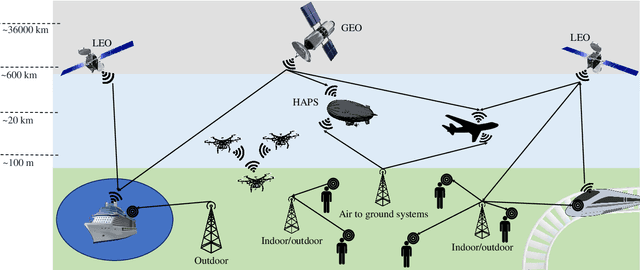
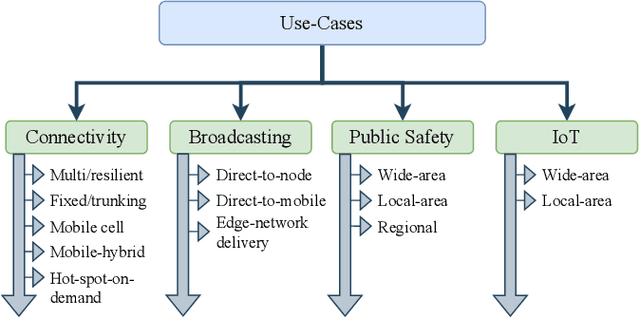
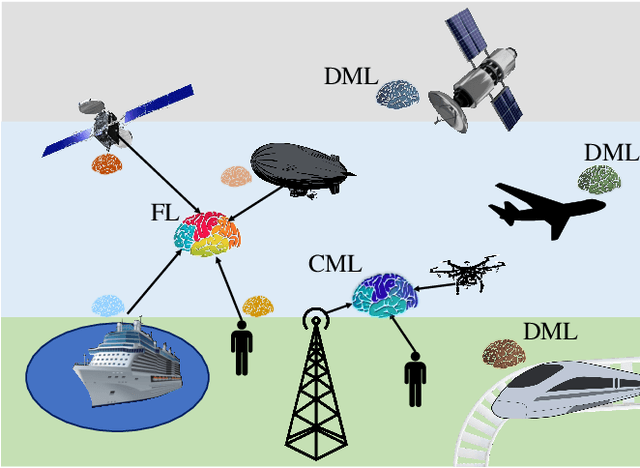
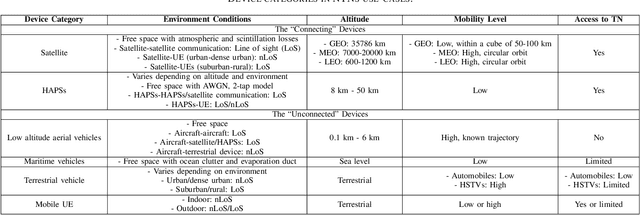
Abstract:Non-terrestrial networks (NTNs) are a critical enabler of the persistent connectivity vision of sixth-generation networks, as they can service areas where terrestrial infrastructure falls short. However, the integration of these networks with the terrestrial network is laden with obstacles. The dynamic nature of NTN communication scenarios and numerous variables render conventional model-based solutions computationally costly and impracticable for resource allocation, parameter optimization, and other problems. Machine learning (ML)-based solutions, thus, can perform a pivotal role due to their inherent ability to uncover the hidden patterns in time-varying, multi-dimensional data with superior performance and less complexity. Centralized ML (CML) and decentralized ML (DML), named so based on the distribution of the data and computational load, are two classes of ML that are being studied as solutions for the various complications of terrestrial and non-terrestrial networks (TNTN) integration. Both have their benefits and drawbacks under different circumstances, and it is integral to choose the appropriate ML approach for each TNTN integration issue. To this end, this paper goes over the TNTN integration architectures as given in the 3rd generation partnership project standard releases, proposing possible scenarios. Then, the capabilities and challenges of CML and DML are explored from the vantage point of these scenarios.
Identification of Distorted RF Components via Deep Multi-Task Learning
Jul 04, 2022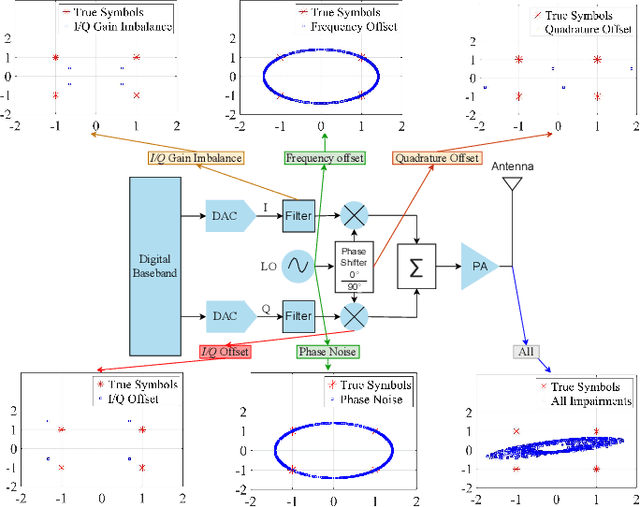
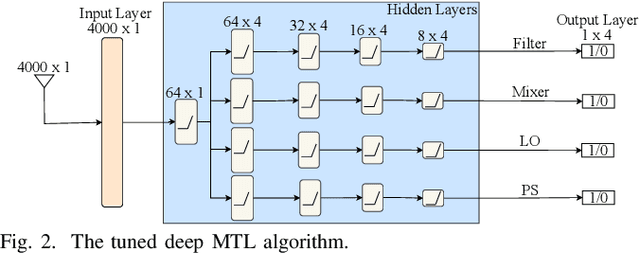
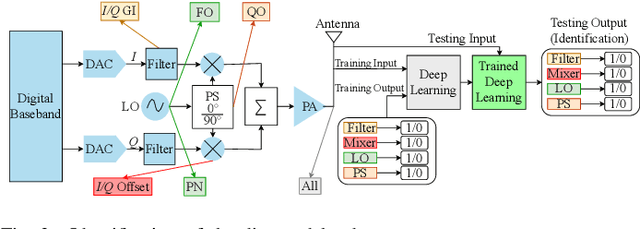
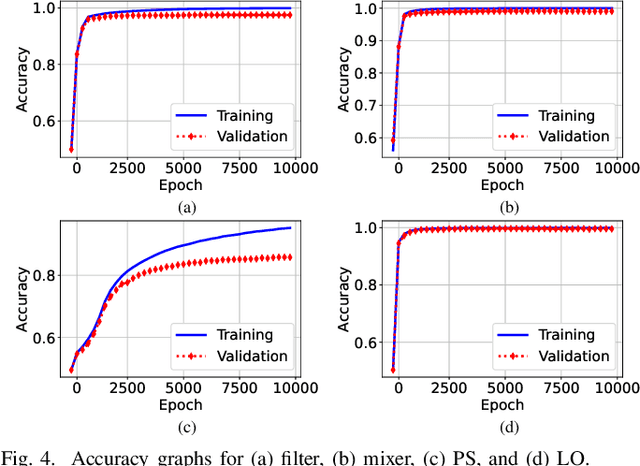
Abstract:High-quality radio frequency (RF) components are imperative for efficient wireless communication. However, these components can degrade over time and need to be identified so that either they can be replaced or their effects can be compensated. The identification of these components can be done through observation and analysis of constellation diagrams. However, in the presence of multiple distortions, it is very challenging to isolate and identify the RF components responsible for the degradation. This paper highlights the difficulties of distorted RF components' identification and their importance. Furthermore, a deep multi-task learning algorithm is proposed to identify the distorted components in the challenging scenario. Extensive simulations show that the proposed algorithm can automatically detect multiple distorted RF components with high accuracy in different scenarios.
Joint Estimation of Multiple RF Impairments Using Deep Multi-Task Learning
Sep 29, 2021

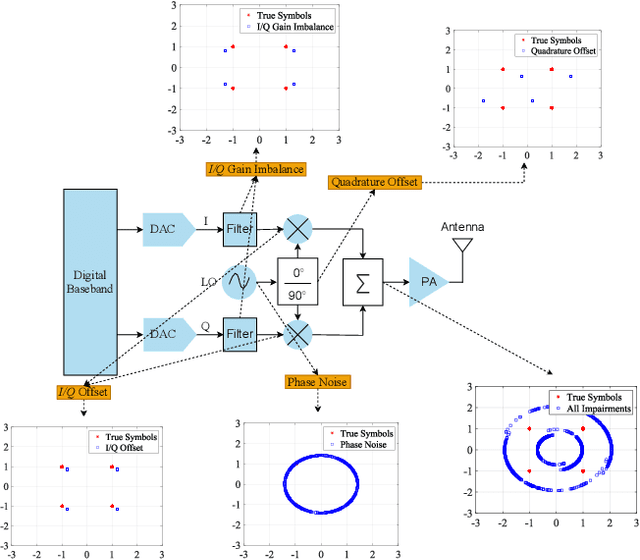
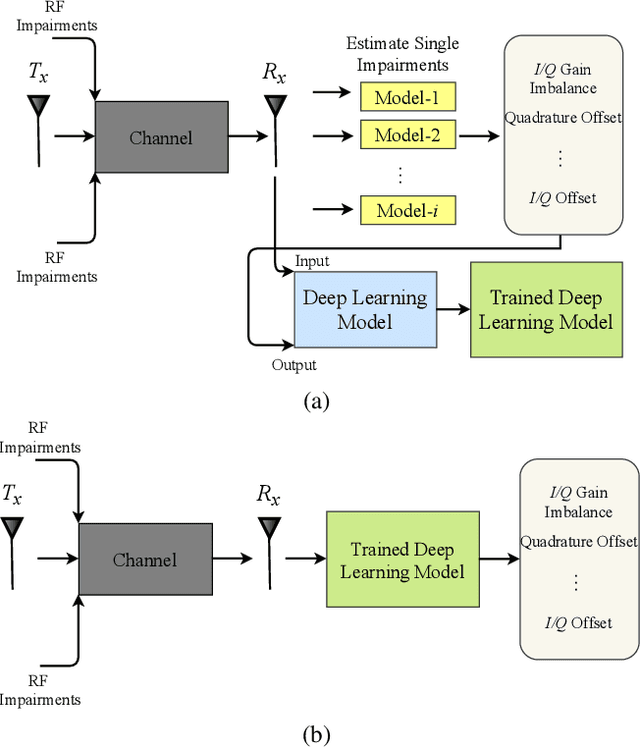
Abstract:Radio-frequency (RF) front-end forms a critical part of any radio system, defining its cost as well as communication performance. However, these components frequently exhibit non-ideal behavior, referred to as impairments, due to the imperfections in the manufacturing/design process. Most of the designers rely on simplified closed-form models to estimate these impairments. On the other hand, these models do not holistically or accurately capture the effects of real-world RF front-end components. Recently, machine learning-based algorithms have been proposed to estimate these impairments. However, these algorithms are not capable of estimating multiple RF impairments jointly, which leads to limited estimation accuracy. In this paper, the joint estimation of multiple RF impairments by exploiting the relationship between them is proposed. To do this, a deep multi-task learning-based algorithm is designed. Extensive simulation results reveal that the performance of the proposed joint RF impairments estimation algorithm is superior to the conventional individual estimations in terms of mean-square error. Moreover, the proposed algorithm removes the need of training multiple models for estimating the different impairments.
 Add to Chrome
Add to Chrome Add to Firefox
Add to Firefox Add to Edge
Add to Edge